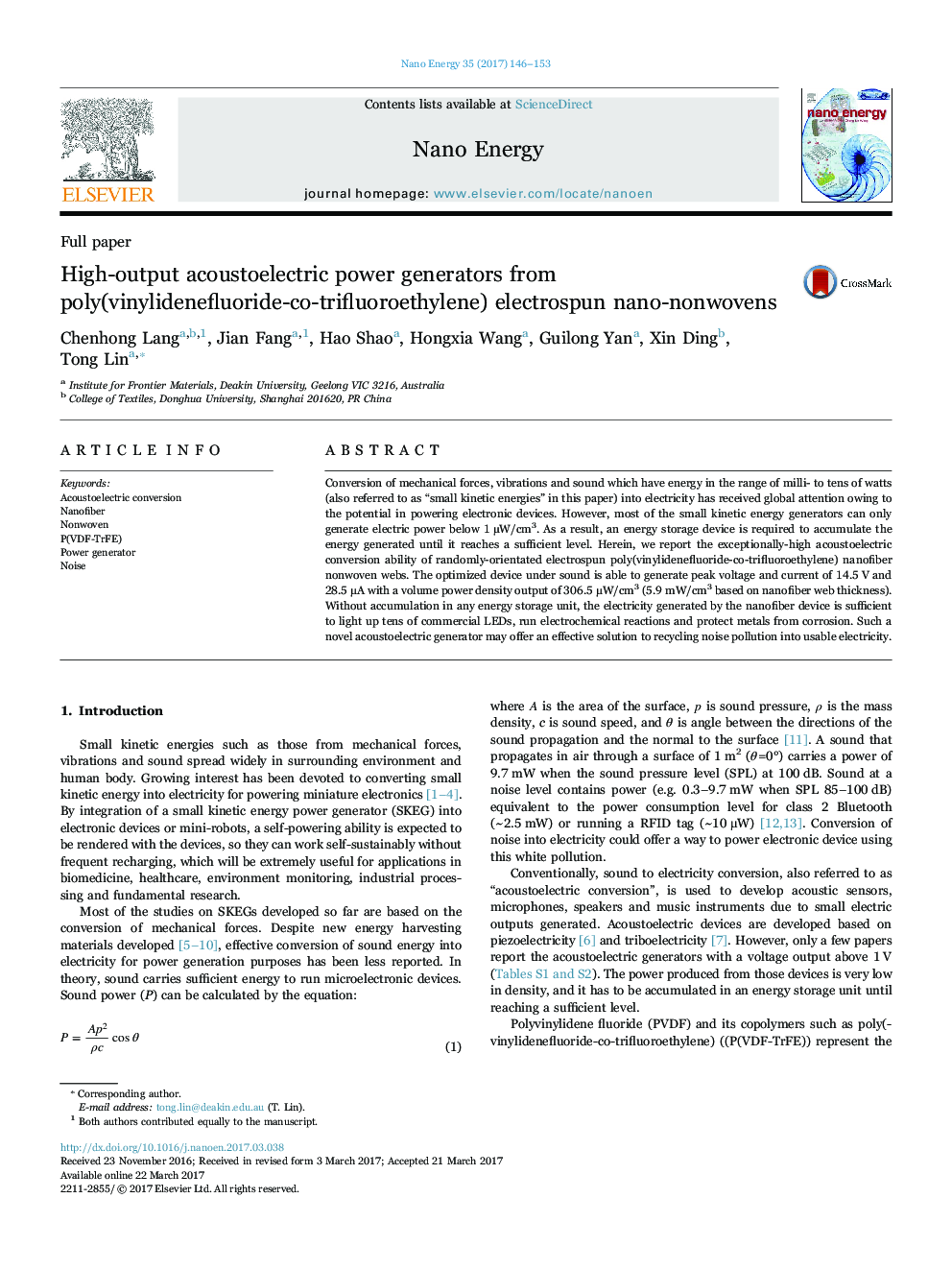| Article ID | Journal | Published Year | Pages | File Type |
|---|---|---|---|---|
| 5452174 | Nano Energy | 2017 | 8 Pages |
â¢Electrospun poly(vinylidenefluoride-co-trifluoroethylene) nonwovens show exceptional acoustoelectric conversion ability.â¢The device under sound can generate peak signal of 14.5 V and 28.5 μA with a volume power density output of 306.5 μW/cm3.â¢The electricity generated can directly light up LEDs, run electrochemical reactions and protect metals from corrosion.â¢The effect of hole number in electrodes on acoustoelectric conversion behavior was systematically examined.
Conversion of mechanical forces, vibrations and sound which have energy in the range of milli- to tens of watts (also referred to as “small kinetic energies” in this paper) into electricity has received global attention owing to the potential in powering electronic devices. However, most of the small kinetic energy generators can only generate electric power below 1 µW/cm3. As a result, an energy storage device is required to accumulate the energy generated until it reaches a sufficient level. Herein, we report the exceptionally-high acoustoelectric conversion ability of randomly-orientated electrospun poly(vinylidenefluoride-co-trifluoroethylene) nanofiber nonwoven webs. The optimized device under sound is able to generate peak voltage and current of 14.5 V and 28.5 μA with a volume power density output of 306.5 μW/cm3 (5.9 mW/cm3 based on nanofiber web thickness). Without accumulation in any energy storage unit, the electricity generated by the nanofiber device is sufficient to light up tens of commercial LEDs, run electrochemical reactions and protect metals from corrosion. Such a novel acoustoelectric generator may offer an effective solution to recycling noise pollution into usable electricity.
Graphical abstractDownload high-res image (287KB)Download full-size image
